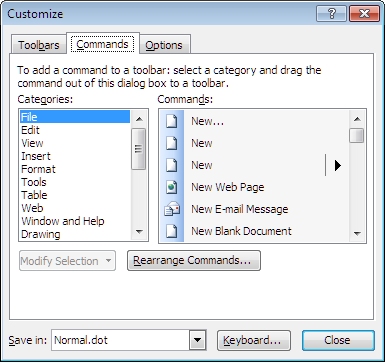


See Customizing the Appearance Using Styles and Skins. Skins: You can change the look and feel of menus (such as the icon used to display a selected menu item), along with some basic functionality (such as the maximum number of menu items that display) by changing the skin. See Internationalizing and Localizing Pages. These files allow you to manage translation of these strings. Localization: Instead of entering values for attributes that take strings as values, you can use property files. For information about accessibility, see Specifying Component-Level Accessibility Properties.
Adding a toolbar to the toolbars and menus area of wrod for mac 2011 how to#
For information about how to define access keys, see How to Define Access Keys for an ADF Faces Component. For information about action events specifically, see Using Buttons and Links for Navigation.Īccessibility: You can use specific attributes on the menu components to create shortcuts that allow users to open menus using a keyboard. For information about events, see Handling Events. See How to Use the EL Format Tags.Įvents: You can use command menu components to launch action events. Using parameters in text: You can use the ADF Faces EL format tags if you want text displayed in a component to contain parameters that will resolve at runtime. See Displaying Table Menus, Toolbars, and Status Bars.Ĭontext menus: You can create menus that launch in a popup when a user right-clicks an item in the UI. Table menus: You can create menus and toolbars that display above a table and work only on that table (as opposed to the whole application). See Using Buttons or Links to Invoke Functionality. Invoking functionality: ADF Faces offer tags that can be used with menu command components to invoke functionality, such as downloading a file or resetting submitted values. Following are links to other functionality that menu and toolbar components can use. Additionally, once you have added these components to the page, you may find that you need to add functionality such as validation and accessibility. You may find it helpful to understand other ADF Faces features before you implement your menu and toolbar components.


 0 kommentar(er)
0 kommentar(er)
